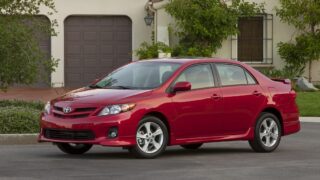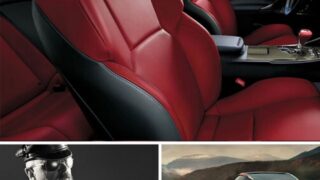Five JDM Quirks that Lexus Never Imported to America
A few subtle changes make all the difference in the world for these otherwise identical cars marketed to two very different countries.
There are a lot of (obvious) differences between JDM and USDM Lexus/Toyota models. You drive on the opposite side, you get unique engine/transmission combinations, and so on. But many subtle alterations exist between two otherwise functionally identical vehicles as well. Toyota generally implemented many of these changes either to better suit the intended customers or to satisfy Japanese road laws. Many of these changes are largely inconsequential. You have everything from different style turn signals to different standard equipment like folding mirrors. Dozens of these small idiosyncrasies exist between each version of the vehicle. But here are a few of the more prominent but sometimes overlooked differences between USDM and JDM Lexus/Toyota models.
4-Wheel Steering (Lexus SC 300 / Toyota Soarer)
Japan features notoriously narrow roads, many of which are one-lane with 30 km/h speed limits. There’s a reason why Japanese people buy smaller cars. In addition to less road tax, smaller cars are more maneuverable in tight spaces. The Z30 Toyota Soarer, a direct port of the first-gen Lexus SC, is classified as a full-size luxury car in Japan. As such, its length is nearly 30% longer than contemporary compacts. To help ease the burden in narrow streets, as well as improve everyday handling, Toyota equipped 874 premium-edition Soarers with a special package.
This package, officially the UZZ32 chassis designation, contained active hydropneumatic suspension (A-SUS), active four-wheel steering (A-4WS), and all the other bells and whistles. Other manufacturers such as Mazda, Mitsubishi, and Nissan also fielded their own 4WS systems during this time. Though the expense and maintenance of the option meant that proportionately fewer JDM cars of all makes ended up with 4WS than almost any other non-powertrain option.
Dual Washer Fluid Buttons (Lexus LS 400)
All Lexus LS models up to 2004 (the history of which is covered here) are known as the Toyota Celsior in native Japan. Under the hood lies a peculiar addition: a second bottle for washer fluid. The wiper stalk featured a corresponding second button labeled, “油膜取り.” In Japanese, this literally translates to, “Oil film/slick remover.” Toyota intended the sprayer to be used with a separate formula of oil-based washer fluid. This canister is bumped up right next to the radiator, so warms up with the car. Spray this hydrophobic washer fluid on to quickly melt away snow and frost and keep ice from settling.
The Extra Passenger Fender Mirror (Various Lexus SUVs)
Nobody accuses the J80 Land Cruiser of skipping meals. And the Toyota Harrier (Lexus RX) was Japan’s first-ever true crossover. And as previously mentioned, the roads in Japan get quite narrow and difficult to negotiate. Therefore, Toyota implemented a small passenger-side fender mirror on its SUVS, a trend that continues to this day. Japan mandated fender mirrors until 1983, and when that law expired, most passenger cars reverted to standard mirrors. However, some SUVs and commercial vehicles retained at least one fender mirror. The main reason is visibility (obviously) similar to trucks with blind spots. You didn’t have to turn your head at all to see the passenger side, especially helpful in narrow streets. Plus the mirror remains visible within the cone of the windshield wipers. Therefore, the fender mirror proved very useful in rain or snow, both frequent visitors on an island nation.
Bespoke Logos (Various)
Toyota holds an approximate 45% market share in new Japanese domestic cars. Such ubiquity often creates the sense that the vehicles lack uniqueness or personality. When buyers started upgrading to luxury marques, they often switched to BMW or Mercedes over another Toyota regardless of its equipment. As such, many higher-end JDM Toyotas omitted the Toyota badge on the front in favor of various unique designs. For example, the Soarer used a griffin, the Harrier used an eagle, and the Altezza featured a stylized ‘A.” These badges show up in various other left-hand traffic nations as well, of course, such as Australia, the Bahamas, India, and South Africa. Often, you’d find them side-by-side with RHD Lexus examples. Other Toyotas used this logo trick as well, such as the Crown, Chaser, and Mark II.
Interior / Comfort Options (Various)
All Lexus models generally feature well-appointed interiors. Even in the 90s-2000s, you’re hard-pressed to find a Lexus with cloth interior, a manual gearbox, and plastic trim. But in Japan, cloth and thinner leather interiors very much took center stage. Why is that? Well, supple leather makes more noise as you move around, an important point in a country well-known for its quiet, reserved people.
Other small interior details also never made it overseas as well. For instance, there’s a button on the radio that tunes to AM 1620 (the frequency of Japan’s Highway Advisory Radio). Finally, concerning the trim options, Toyota analogs generally have a “cheaper” vibe to them, with plastic instead of wood, for example. That’s because, in Japan, Toyota fielded a number of JDM-exclusive luxury vehicles already, including the Crown up to the hand-assembled Century. Therefore, Toyota felt there was little marketing sense in developing two or more mid-level luxury models for a single dealership, since Lexus didn’t separate until 2005.
Images courtesy: Ameblo (Japanese), Wikimedia Commons, Lexus News Room










